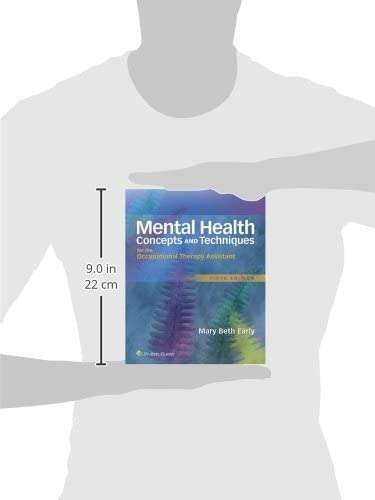Nov. 9, 2021
Leer en español
How Psychologists Can Help Treat Chronic Pain
Over the past two decades, as the opioid crisis has shaken the public’s view of painkillers and pharmaceutical companies have come under fire for their marketing practices, many patients are looking for alternatives. One of the leading contenders has become treating pain with talk therapy.
Psychologists, therapists and social workers have quietly become a crucial part of pain treatment programs, proving to be as effective or more so than medication. In 2018, the medical journal The Lancet went so far as to recommend education and psychological treatment as first-line interventions for chronic low back pain, before pharmacological treatment.
A spokesman for the American Psychological Association said they have only recently started tracking pain psychology and in 2021 found that nearly 40 percent of its members report their patients frequently have chronic pain. The organization is currently drafting guidelines for chronic pain treatment, a sign, according to Lynn Bufka, a Maryland psychologist and a senior director at the A.P.A., that it’s an important and growing field with science-based solutions.
Still, finding the right pain counseling can take a bit of effort on the part of the patient. Here are a few things to consider before you get started.
What does a pain psychologist do?
Many pain psychologists treat chronic pain with cognitive behavior therapy, or C.B.T., which focuses on reframing thoughts to positively affect behavior and emotions, or mindfulness, which involves learning to become conscious of feelings without reacting to them. Acceptance and commitment therapy combines mindfulness and C.B.T. to help patients accept their emotions and respond to them.
Another method psychologists use to treat pain is biofeedback, which monitors a person’s muscle tension, heart rate, brain activity or other functions in real time to make patients aware of their stress and learn to control it. Lastly, some clinicians use hypnosis, which can be effective at managing pain for some people.
What unifies all these treatments is a focus on teaching patients how they can use their minds to manage their pain.
How do you find a pain psychologist?
Finding a pain psychologist can be tough. Large medical centers and boutique practices are more likely to have comprehensive pain treatment but also tend to be in urban areas. People in rural areas or those who can’t afford the services get left out, said Rachel Aaron, an assistant professor of physical medicine and rehabilitation at Johns Hopkins Medicine. But even in urban areas, not all large medical networks have pain services.
“It’s definitely a challenge to get from the initial pain diagnosis to psychological care no matter what system you’re in,” said Dr. Aaron.
There are no specific certifications for pain management therapists, said Eric Garland, director of the Center on Mindfulness and Integrative Health Intervention Development at the University of Utah, nor does the American Psychological Association track their numbers. But most experts agree there is a shortage of pain-focused psychologists, just as with other mental health professionals.
If you are interested in trying a pain therapist, Dr. Aaron said, the first stop is your primary care doctor. Some insurance plans cover pain psychology, but others do not. It’s important to talk to a mental health provider first about how to get treatment covered.
After that, look for specialized pain clinics by calling hospitals in your area or use the Find a Therapist function on the Psychology Today website. Search for a provider who either treats your specific condition, be it fibromyalgia or migraines, or who treats chronic pain more broadly, a specialty often referred to as behavioral medicine or health psychology. There are also online programs that are evidence-based and freely available; Dr. Aaron recommends PainTRAINER and Pain Course.
Some experts recommend working with licensed professionals with doctorates or master’s degrees in psychology or clinical social work with additional training in chronic pain, and to interview them about their training and approach before getting started.
“If they can’t give a clear answer on their approach or how they would treat your specific pain issue, they probably don’t have good training,” Dr. Garland said.
Most importantly, you should feel comfortable enough to open up with them.
What should you expect?
Most pain therapy programs start with six to eight weekly sessions, said Fadel Zeidan, an associate professor of anesthesiology and executive director at the Center for Mindfulness at the University of California, San Diego. Often the first session is an evaluation to learn about the pain problem and the emotional issues it may be causing. You might then learn mindfulness techniques to separate the physical and emotional aspects of pain, train yourself to reframe negative thought patterns or practice paying more attention to pleasant sensations.
One recent paper in JAMA Psychiatry found that two-thirds of chronic back pain patients who underwent four weeks of psychological treatment were pain-free, or nearly so, afterward. However, most studies show a more modest effect — about one-third of participants see a significant decrease in pain.
To put this in perspective, this is about the same as opioids’ effect on chronic pain, but those benefits diminish over time (and they come with risks). The effectiveness of psychological pain management skills, on the other hand, can increase with practice.
Dr. Zeidan recommended trying different methods at once — individualized therapy, pain management courses and group therapy. “We don’t actually know what the silver bullet is because there likely isn’t one to cure pain. So testing, validating and optimizing multiple approaches is a critical step.”
What if you can’t see a psychologist in person?
The definitions insurance companies use for chronic pain are rapidly changing — with pain being increasingly seen as its own disease — but for now it’s hard to get a trip to a pain psychologist covered. That can put one-on-one treatment out of reach for many.
“We do not have enough trained psychologists to address all of the need,” said Beth Darnall, the director of the Stanford Pain Relief Innovations Lab. “We really have to look beyond what we are doing now.”
Dr. Darnall said that technology could provide new alternatives, since many of the psychological tools shown to diminish pain can be learned and shared with minimal training. She has created a program, based on C.B.T. and other models, called Empowered Relief, which is affordable and can be done from your own home.
Patients can sign up, often for free, for a single two-hour online class delivered by her or one of 300 instructors, all health care professionals, who offer simple skills to calm the nervous system, reframe pain and change how your brain processes it. It’s been integrated into the Cleveland Clinic for chronic pain and spine surgery patients, as well as several insurance companies. In one trial, a single class was comparable to eight sessions of C.B.T. She’s also currently working on an app and even virtual reality platforms.
“You can live on a ranch in Idaho and get quality access to evidence-driven pain care,” she said.
Dr. Darnall stressed that psychological counseling is just one component of a treatment program for chronic pain, which can also include medication or lifestyle changes.
“It’s not psychological treatments or medication,” Dr. Darnall said. “It’s a menu, and patients might land on two or three different options that offer a good formula for them.”
August 14, 2019
Dr. David Boyce is board-certified in general anesthesiology and pain medicine. After graduating from Tufts University School of Medicine, he completed his residency and a pain medicine fellowship at Brigham and Women’s Hospital in Boston. He … See Full Bio
Salim Zerriny, MD is a 3rd-year resident, currently training at Brigham and Women’s Hospital Anesthesiology Program. He has a special interest in pain and healthcare innovation. See Full Bio
As a service to our readers, Harvard Health Publishing provides access to our library of archived content. Please note the date of last review or update on all articles.
No content on this site, regardless of date, should ever be used as a substitute for direct medical advice from your doctor or other qualified clinician.
6 Psychological Interventions for Treating Chronic Pain
Chronic pain causes extensive changes in the brain andcentral nervous system. As a result, the effects of chronic pain are oftenassociated with heightened comorbid symptoms of depressionand anxiety,as indicated by research. Furthermore, chronic pain can lead to chronicstress—affecting the body’s ability to heal, and promoting further pain.The ways chronic pain can affect the body andmind have created the opportunity for additional treatment options, such aspsychological intervention.
Psychological Interventions to help treat Chronic Pain
There are a variety of psychological interventions designed to treat chronic pain that do not require a person to take prescription medications. This is good news, considering America has found itself in the midst of an opioid overdose epidemic, with 100 million Americans suffering from chronic pain.

1. Mindfulness-Based Approach
Using mindfulnessto treat chronic pain involves focusing on the pain from a new perspective.When the brain reacts to chronic pain, it’s associating judgment with thepain—thinking negatively about it—focusing on how much one wishes the pain togo away. Such negative thought patterns contribute to feelings of anxiety,depression, and stress. Mindfulness looks at pain with inquisitive eyes ofnon-judgment. Other ways to incorporate mindfulness in chronic pain managementare by practicing breathing exercises and engaging in a visualized body scan—apractice in guided imagery designed for teaching the brain to be present witheach part of the body. The results of the effectiveness of guided imagery canbe measured by doctors with biofeedback.
2. Cognitive-Behavioral Therapy

Negative thought patterns contributing to greater levels ofdepression and anxiety can be combated through CBT, as it teaches one to challenge negativethoughts, and form new ways of thinking that promote decreased levels ofanxiety, depression, and pain.
3. Relaxation Techniques
Relaxation techniques help you relax both mentally and physically.This helps alleviate pain, and its comorbid symptoms. Some relaxationtechniques help relax the muscles, as chronic pain contributes to muscletension. Other relaxation techniques calm the mind—helping alleviate thementally debilitating effects of chronic pain that exacerbate symptoms.
4. Somatic Anchoring
Somaticanchoring involves rapid self-hypnosis for combating chronic pain. Thistechnique combines cognitive restructuring with mindfulness techniques, as wellas indirect, and direct suggestions via hypnosis. This technique has been usedto treat various cases of both chronic and acute pain.
5. Hypnosis
Several research studies show hypnosis to beeffective in treating chronic pain. By retraining the mind through hypnosis,psychologists help reduce pain for most chronic pain sufferers. However, thereis a small group of the population who are immune to the effects of hypnosis,but for those who are able to become hypnotized, this method can significantlyreduce the symptoms and severity of chronic pain.
6. Acceptance and Commitment Therapy

Acceptance & Commitment Therapy (ACT) is within the family of CBT (Cognitive Behavioral Therapy) but differs in its philosophical assumptions and scientific strategies. ACT focuses on being psychologically flexible which is “the capacity to continue with or change behavior, guided by one’s goals, in a context of interacting cognitive and direct non-cognitive influences.” In other words, being able to accept the things in life that are out of one’s control, while committing to improving and enriching one’s life. This approach teaches psychological interventions for managing painful feelings and thoughts (essentially mindfulness). It also helps a person identify his/her values—motivating positive life changes. This can help to reduce the intensity and frequency of psychological experiences such as pain.
If you’re one of the 100 million Americans who are suffering from chronic pain, there are a number of treatments options available that have proven to be effective in holistically treating chronic pain; such as the psychological interventions listed above, without the use of prescription medications such as opioids.
You may also like:
Can Childhood Factors Predict Your Adult Back Pain?
The Biochemistry of Pain – What’s Going On Beneath the Surface?



